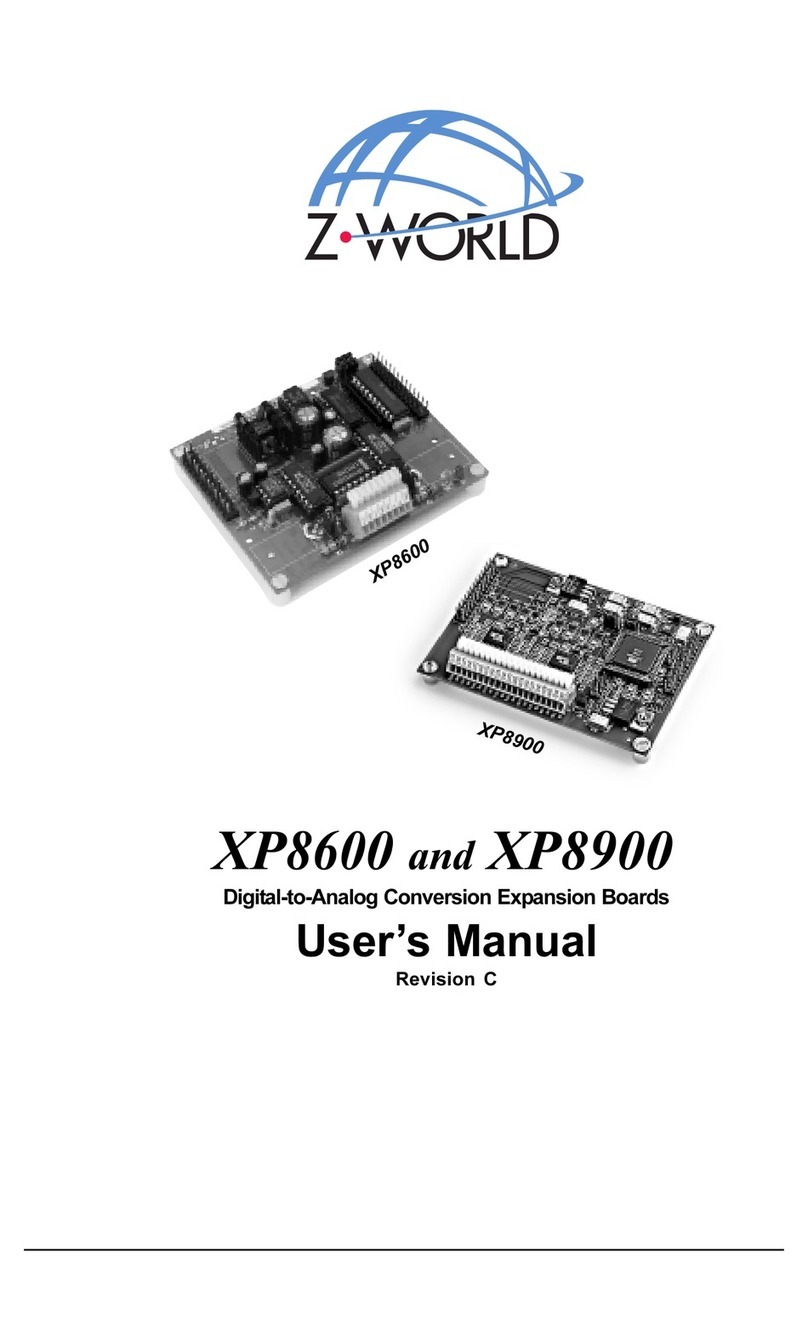XP8500 and Exp-A/D12 Contents siii
TABLE OF CONTENTS
About This Manual vii
XP8500
Chapter 1: Overview 13
Chapter 2: Getting Started 15
XP8500 Components ........................................................................... 16
Connecting Expansion Boards to a Z-World Controller ...................... 17
Setting Expansion Board Addresses .................................................... 18
XP8500 Addresses ..........................................................................18
Power ................................................................................................... 18
Chapter 3: I/O Configurations 19
XP8500 Pin Assignments..................................................................... 20
Operating Modes ................................................................................. 20
Using Analog-to-Digital Converter Boards .........................................21
How to Set Up An XP8500 .................................................................. 22
Conditioned Inputs (CH0CH3) .....................................................22
Excitation Resistors ......................................................................24
EEPROM ......................................................................................24
Unconditioned Inputs (AIN4AIN10) ............................................ 25
Internal Test Voltages ......................................................................25
Power-Down Mode ......................................................................... 25
Drift .................................................................................................26
Selecting Gain and Bias Resistors .......................................................27
Chapter 4: Software Reference 33
Expansion Board Addresses ................................................................ 34
XP8500 Software ................................................................................. 35
Dynamic C Libraries .......................................................................35
Initialization Software ..................................................................... 36
XP8500 Drivers ..............................................................................37
Other XP8500 Drivers ..................................................................39
Correcting Readings ..................................................................... 44
Sample Program .............................................................................. 44
Advanced XP8500 Programming ........................................................ 47
PLCBus-Level Communication ...................................................... 47





























